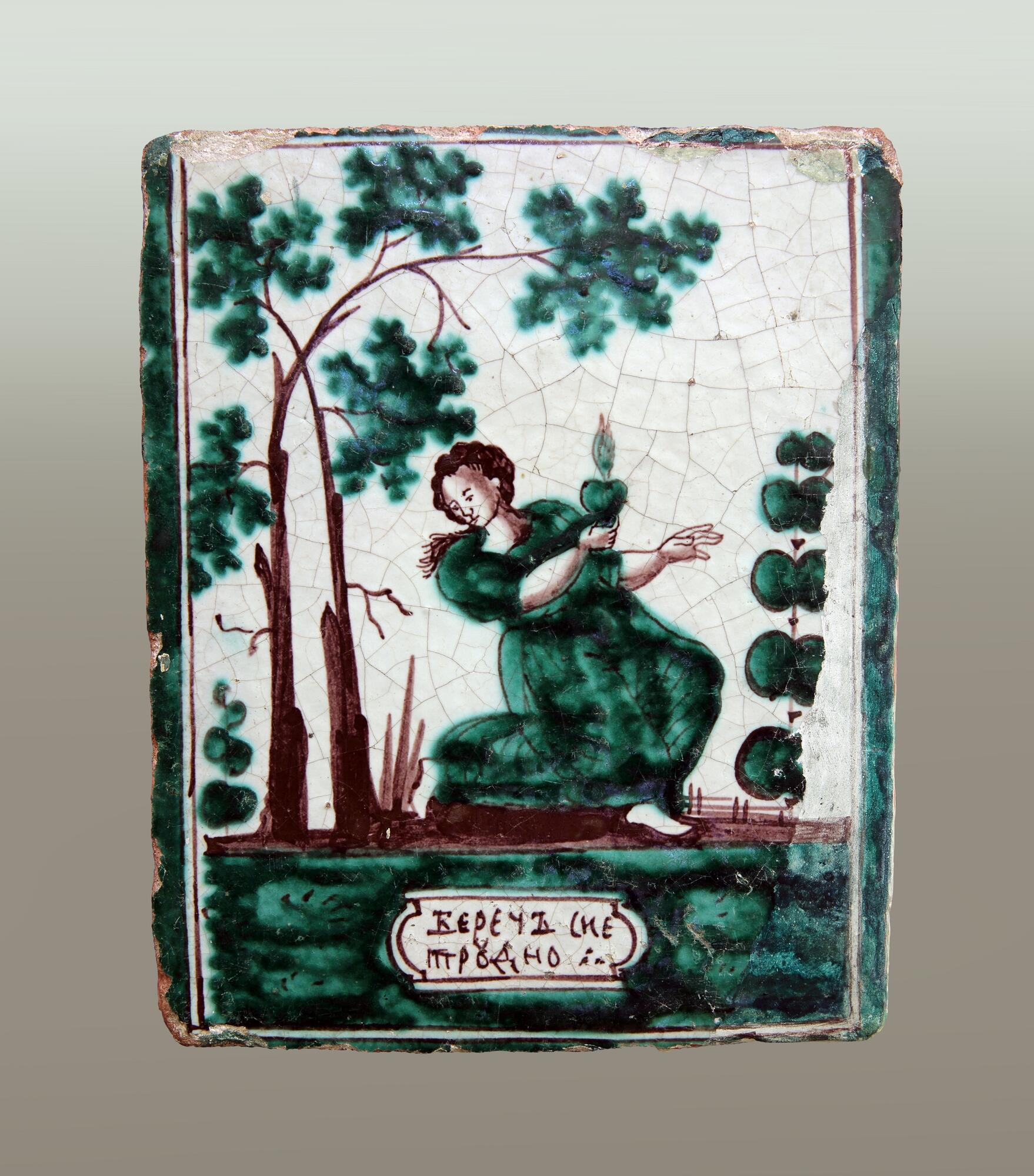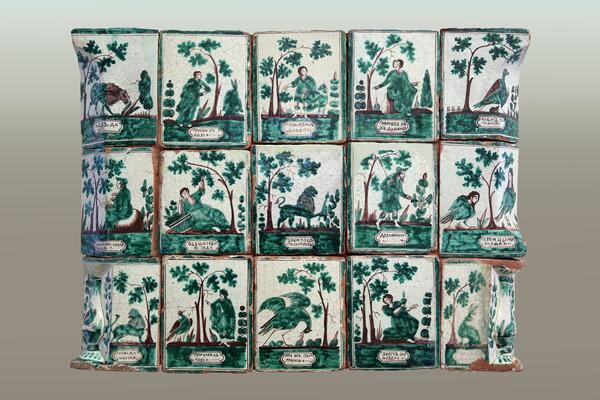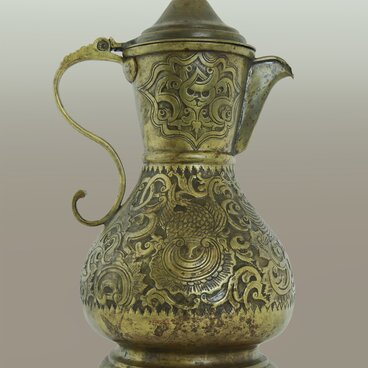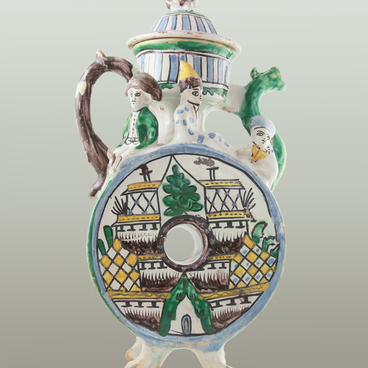The collection of folk art of the Russian Museum houses 23 tiles featuring various scenes that used to adorn one and the same stove. Fifteen of them are displayed in the permanent exhibition as a single whole — they are open to the public. One of the most interesting tiles of the composition is the one with the inscription:
1 / 3
Stove tile
Creation period
the 18th century
Dimensions
20,3x16,5 cm
Technique
clay, glaze, painting
Collection
Exhibition
4
Open in app#2
#9
It is difficult to take care of this.
#10
It depicts a young woman holding a burning heart — a sign of passionate and, apparently, unrequited love. She turns her face away from the heart in a sad and unassuming way. The image is borrowed from the book “Symbola Et Emblemata”: the emblem titled “I cannot burn silently” featured the same young woman lifting her eyes to heaven in prayer.
It is possible to see a complete tile stove in the utility rooms of St. Basil’s Cathedral on Red Square in Moscow. In addition, tiles with a similar decor are kept in other museums of St. Petersburg: the Stieglitz Museum of Decorative and Applied Arts and the Russian Museum of Ethnography.
The 18th century was the heyday of tile art. At that time, the stove played an important role in a Russian household. Craftsmen borrowed plots for their tiles from various popular prints, engravings, book illustrations, and Karion Istomin’s alphabet book. The book “Symbola Et Emblemata” also served as a very popular source. This collection was compiled by decree of Peter I and contained symbols that were used in decorative art, literature and everyday life from the 17th to the 19th centuries. Nevertheless, artisans did not simply copy various sources, but developed them in their own way, creating a unique artistic composition.
The tradition of including inscriptions was introduced in the middle of the 18th century under the influence of popular prints and engravings.
It should be pointed out that the paint was applied on the unglazed clay — this prevented the paint from spreading over the flat surface. During firing, the color glazes fused onto the original glaze, and the item was ready. This meant that the artist had only one attempt, and each brush stroke had to be honed to perfection. It only took one wrong hand movement to ruin everything.
It is possible to see a complete tile stove in the utility rooms of St. Basil’s Cathedral on Red Square in Moscow. In addition, tiles with a similar decor are kept in other museums of St. Petersburg: the Stieglitz Museum of Decorative and Applied Arts and the Russian Museum of Ethnography.
The 18th century was the heyday of tile art. At that time, the stove played an important role in a Russian household. Craftsmen borrowed plots for their tiles from various popular prints, engravings, book illustrations, and Karion Istomin’s alphabet book. The book “Symbola Et Emblemata” also served as a very popular source. This collection was compiled by decree of Peter I and contained symbols that were used in decorative art, literature and everyday life from the 17th to the 19th centuries. Nevertheless, artisans did not simply copy various sources, but developed them in their own way, creating a unique artistic composition.
The tradition of including inscriptions was introduced in the middle of the 18th century under the influence of popular prints and engravings.
It should be pointed out that the paint was applied on the unglazed clay — this prevented the paint from spreading over the flat surface. During firing, the color glazes fused onto the original glaze, and the item was ready. This meant that the artist had only one attempt, and each brush stroke had to be honed to perfection. It only took one wrong hand movement to ruin everything.
#12
Stove tile
#11
The State Russian Museum
read morehide
00:00
00:00
1x
Stove tile
Creation period
the 18th century
Dimensions
20,3x16,5 cm
Technique
clay, glaze, painting
Collection
Exhibition
4
Open in app
Share





